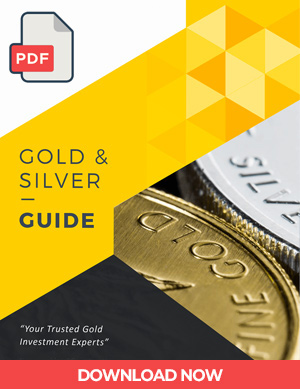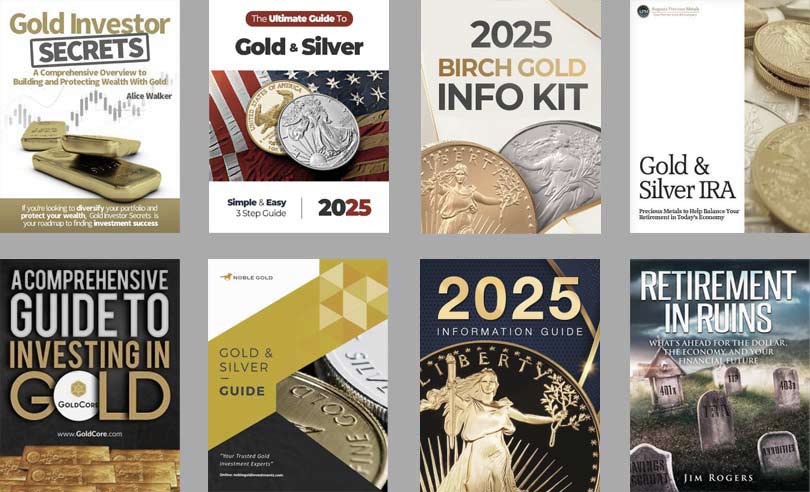Unless you’ve been asleep for, well, years at this point, you’re likely aware of the stunning resilience that’s been demonstrated by gold recently.
 Bullion.Directory precious metals analysis 21 April, 2025
Bullion.Directory precious metals analysis 21 April, 2025
By Isaac Nuriani
CEO at Augusta Precious Metals
Gold Fueled by “Unprecedented Uncertainty” Right Now
At first glance, the concern is understandable. After all, gold’s epic climb has been one for the history books. Through Wednesday of this week, gold had jumped 28% so far this year amid what one analyst has called “unprecedented uncertainty” intensified by grave concerns about U.S. tariff policy and the onset of a contentious trade war.[2] Making gold’s rise all the more impressive is the fact that it has evolved at the same time that mainstream assets and indexes have taken a terrible tumble; also year-to-date (through Wednesday), the benchmark S&P 500 index had declined 10%, while the tech-heavy Nasdaq Composite, which is especially popular with investors seeking dynamic growth, had sunk nearly 16%.
But gold’s sustained momentum was evident well before January 2025. In 2024, gold reached record highs 40 times on the way to finishing up 27% for the year.
In fact, gold’s sustained uptrend has been in motion for far longer than that. While there is some disagreement over when, precisely, the current gold bull market actually began, some analysts claim it kicked off in 2022, when central bank gold demand reached its highest-ever level.
Since the beginning of 2022 through Wednesday, gold is up roughly 80%.
Given these performance numbers, it makes sense that some analysts expect gold to start giving back some of its rapidly acquired gains.
One analyst, in fact, says he’s projecting gold to slide by about 40% over the next few years.
“Gold’s recent rally was driven by fear,” Morningstar strategist John Mill said recently, “but with inflation expectations cooling and the possibility of trade normalization, the metal could see a major correction.”[3]
While few analysts right now seem to share Mills’ view that gold could be headed for that big of a fall, it has always been the case that no asset steadily rises forever. But in embracing that perfectly sensible and very prudent piece of wisdom, it sometimes can be easy to overlook the fact that any real correction, particularly in the case of so-called real assets such as commodities, tends to be rooted in a material weakening of one or more of the instrument’s underlying drivers.
UBS Analyst: “Doesn’t Make Sense” to Say Gold’s Run Is Over Just Because It Keeps Hitting Records
And as long as these drivers are still intact, many analysts say it doesn’t make sense to dismiss the prospect of gold remaining a viable asset option — with its price continuing to increase — simply because its recent positive price action has been especially vigorous.
“It is always tricky to chase the market higher and [it’s] uncomfortable when everyone seems to be on the same side of the trade,” UBS strategist Joni Teves wrote to clients in February. “But it also does not make sense to call for the end of gold’s bull run simply because it has reached yet another record and has already rallied 10% YTD (year to date).”[4]
Embracing that philosophy, many of the world’s most prominent investment banks keep projecting higher prices for gold through the foreseeable future, even as gold has climbed as high as it has for as long as it has.
Two examples: In just the last several days, Teves’ own UBS has once again raised its price target for 2025, while Goldman Sachs has done the same. The ever-higher price targets reflect an unusual enthusiasm for the metal on the part of established investment houses that historically see the worthwhileness of assets largely in terms of their relevance to mainstream dogma.
This week, we’re going to take a look under the hoods at the latest gold narratives of each of these noted investment banks. Why, in fact, do their outlooks for gold remains so robust despite the metal’s ongoing price surge?
But we’re going to get even more fundamental than that. We’re also going to see if we can understand, with the help of an analyst at Sprott Asset Management, an institutional investor focused on precious metals and critical materials, just what it is about gold that potentially makes it a prudent purchase regardless of what its price might be at any given time.
Noted Investment Banks Didn’t Hesitate to Project Higher Target Price for Gold
UBS Chief Investment Office (CIO) is the globally situated investment “brain trust” that advises the firm’s wealth managers and clients as to perceived opportunities and risks within the multi-asset marketplace. It is, for all practical purposes, the “bottom line” when it comes to providing investment insights at UBS.
And right now, the CIO seems to be breathlessly enthusiastic about the prospects for gold.
It was all the way back on March 17 (yes, that’s a bit of sarcasm) when the CIO raised its $3,000-per-ounce price target for gold to $3,200.[5]
Less than one month later, on April 11, gold surpassed $3,200. And that same day, the CIO boosted its 2025 target price for gold once again, this time to $3,500 per ounce.
The CIO did make sure to note, as something of a caveat, that changes to what have been strongly pro-gold conditions could temper the metal’s outlook:
CIO acknowledges that certain developments could cap gold’s rise: easing geopolitical tensions, a return to more cooperative trade relations, or a significant improvement in the US macro and fiscal backdrop.[5]
Honestly, however, it doesn’t appear as though the minds at UBS’s CIO seem terribly convinced any of that is likely to occur.
UBS sees both nonstructural and structural demand for gold settling in at higher levels. Non-structural demand is that which stems from a more singular event or trend, such as the current tariff and trade drama which has prompted many investors to seek the safe-haven cover of gold. Structural demand arises from influences that are underlying and more foundational and likely to persist through the ebb and flow of changes to nonstructural demand.
“Aside from safe-haven demand and tactical speculators’ positioning,” the CIO writes, “we see signs of a more structural shift in gold allocations — for example, Beijing allowing insurance funds to invest in gold and central banks systematically raising gold’s share of total reserves.”[5]
(Note: In a recent economic update, Devlyn Steele, director of education at Augusta Precious Metals, discussed the decision by Chinese authorities to permit insurance companies in that country to begin investing in gold. You can view that video presentation here.)
Declaring that “this historic rally is being fueled by a perfect storm of factors,” the CIO now says not only that its base-case 2025 price target for gold now stands at $3,500, but that its upside price target … the price target UBS expects if expected pro-gold conditions become even more ideal … is now up to $3,800 per ounce.[5]
And as I alluded to earlier, UBS is by no means the only prominent global investment bank that sees the skies getting even bluer and the sunshine even brighter for gold, even as the metal continues to break records on what seems like a daily basis.
Target Price for Gold at Goldman Sachs Now as High as $4,000-Plus
Goldman Sachs is another prominent global investment bank with a similar take on gold’s future.
In a note written April 11 — the date gold surpassed $3,200 per ounce for the first time — an analyst team at Goldman headed by PhD economist Lina Thomas said it now expects gold purchases by central banks to average roughly 80 tons per month this year, an increase from the analysts’ previous estimate of 70 tons per month.[6] Eighty tons per month puts Goldman’s forecast of central bank gold demand in 2025 much closer to the expectation of the World Gold Council that central banks could purchase at least 1,000 metric tons of gold in 2025 for the fourth consecutive year.[7]
Thomas and her team also said in that same note they’re looking for flows into exchange-traded funds (ETFs) to pick up on the basis of increased safe-haven demand among investors. Together, the projections of higher official-sector purchases (central bank demand) as well as higher ETF inflows prompted the analysts to conclude that gold is on track to reach $3,700 per ounce this year, up from the previous $3,300-per-ounce target.[6]
But the strategists also cited an even higher upside price target based on what they see as the growing possibility of U.S. recession, the chances of which they now peg at 45%. If the economy does fall into a recession-level downturn, they said, then “ETF inflows could accelerate further and lift gold prices to $3,880 an ounce by year-end.”[6]
Gold’s “Risks … Are Very Much Skewed to the Upside”
Separately, Daan Struyven, who is one of the heads of global commodities research at Goldman, said he believes gold potentially could go even higher in 2025, declaring that “risks … are very much skewed to the upside.”[8]
“We think that gold could rally to $4,250 per troy ounce by year end if we were to see a recession, which would really boost ETF, investors’ demand, for gold as the Fed would cut [interest rates] probably by around 200 basis points,” Struyven said on a Goldman podcast recorded April 8. “If central banks were to continue the very-rapid purchase rhythm of gold over the last few months, you would get there, too.”[8]
Struyven added that speculative positioning into gold could increase, as well, if uncertainty remains high in 2025.
“If you put those conditions together,” Struyven said, then gold at $4,250 per ounce becomes “a fairly plausible scenario” by the end of the year.[8]
To be sure, the unwavering — even intensifying — enthusiasm for gold among multiple big-time global investment banking analysts as the metal’s price speedily reaches new, never-before-seen heights speaks volumes about just how conducive the current environment is to the appeal of safe-haven assets.
But it also raises the possibility that as long as there’s a perceived need for safe-haven asset protection, the price of entry into those safe havens potentially should be of little-to-no concern. As it happens, one strategist makes that very case. And the implications of his contention potentially suggest yet another reason why gold’s recent surge does not, in and of itself, serve as a reason to avoid putting new money into the asset.
Strategist: Gold Is a “Relative Asset” Which Means No Such Thing as a Price High
“I always remind people gold’s a relative asset,” Ed Coyne, senior managing partner at Sprott Asset Management, said last year. “It’s relative to the rest of your portfolio so when you think about it just in absolute terms this is not a stock; this is a yellow rock that sits on the shelf — it’s an alternative currency. When you think about it in those terms, over time it’s going to appreciate.”[9]
Coyne is suggesting here that it’s a mistake to look at gold in the same way one may be inclined to look at a stock or other growth asset within the context of their portfolio.
Gold is a hedge asset, Coyne reminds investors. Which makes its true purpose in a portfolio fundamentally different from that of a stock. That, in turn, means the criteria for deciding whether it’s an appropriate portfolio component should be fundamentally different, he suggests.
Thar includes putting a greater-than-warranted emphasis on gold’s price at any given time.
“There’s going to be ebbs and flows and there’s going to be volatility in the pricing based on many factors out there,” Coyne said. “But this idea that you’ve missed a trade or it’s at a peak or it’s at a bubble…maybe in the short term that could be true from time to time; but when you look at the long-term performance pattern of gold over time…the purchasing power of the dollar continues to go down and gold continues to go up. So, I don’t really think there’s a high in any cycle.”[9]
Obviously, Coyne was speaking of gold in terms of its potential value as a hedge against dollar debasement and broader fiscal uncertainty. But the core sentiment applies regardless of the specific risk(s) an investor may be seeking to hedge against: that the prospective purchase price of gold perhaps should be viewed as less of a consideration than the value that may be derived from the metal’s potential to thrive as a hedge and safe haven.
Such a rationale could make even more sense to some when they recognize that at whatever perceived price high gold has achieved since the beginning of the millennium, the metal’s price has continued to rise, overall.
Is Gold “an Evergreen Allocation”?
“What’s interesting is you look at gold over multiple market cycles, not only has it dampened volatility, it’s actually enhanced your risk adjusted rates of return,” Coyne said. “So, we’ve seen over multiple market cycles – not just the current cycle – that gold’s done very well. In fact, if you look at it year-to date, it’s outperforming; if you look at it on a three-year basis, it’s outperforming; if you look at it since the introduction of quantitative easing and financial engineering going back to early 2000 after the tech bubble burst, gold’s actually outperforming.”[9]
“So, as you widen your lens,” he added, “you start to understand that gold is a very low-cost, liquid way to hedge your portfolio.”[9]
“I mean, there’s just an evergreen allocation to the space,” Coyne suggested. “Think about it in those terms.”[9]
Which effectively nullifies the significance of the target price for gold, if one takes that idea to its logical conclusion. That said, many people – including some analysts – may not be prepared to disregard altogether price projections and notions of relative lows and highs in metals pricing in favor of remaining focused exclusively on gold’s strategic value as a potential hedge.
But the fact that a number of the world’s notable investment banks keep raising their target price for gold with little apparent concern for how high and fast the metal’s price has ascended into record territory could be viewed by some as proof of just what Ed Coyne is contending: that as long as there’s a compelling reason to own gold, the cost to acquire it perhaps is, or should be, a secondary consideration – and who knows where the price of gold will go in the future?
Isaac Nuriani


Isaac Nuriani is CEO at Augusta Precious Metals, America’s leading gold IRA specialists and Bullion.Directory’s go-to precious metals dealer for HNW (High Net Worth) investors.
Issac’s passion is educating and empowering retirement investors to protect their savings. He is a member of Ethics.net and the Industry Council for Tangible Assets (ICTA) – and leads a team of financial professionals at Augusta who share his commitment to service with integrity, as they help retirement savers use silver and gold IRAs to achieve effective diversification.
[1] James Stanley, FOREX.com, “Gold Goes Parabolic as Tariff Uncertainty Shocks Stocks” (March 31, 2025, accessed 4/17/25).
[2] Neils Christensen, Kitco, “Fear and chaos will support gold’s continued run above $3,200 next week” (April 11, 2025, accessed 4/17/25).
[3] CNBC TV18, “Gold is falling when it should be soaring: Here’s what’s going on” (April 8, 2025, accessed 4/17/25).
[4] Steve Goldstein, Morningstar, “Why UBS and Goldman Sachs are boosting their gold forecasts” (February 18, 2025, accessed 4/17/25).
[5] UBS Editorial Team, UBS, “CIO raises gold price target to USD 3,500/oz” (April 11, 2025, accessed 4/17/25).
[6] Bloomberg, Mining Weekly, “Goldman puts $4,000 gold on the agenda as hunt for havens grows” (April 14, 2025, accessed 4/17/25).
[7] World Gold Council, “Gold Demand Trends: Full Year 2024” (February 5, 2025, accessed 4/17/25).
[8] Daan Struyven and Allison Nathan, Goldman Sachs, “Recession watch: How to hedge now” (April 8, 2025, accessed 4/17/25).
[9] Kitco News, “‘The stage is being set’: Are western investors returning to Gold ETF’s? – Ed Coyne” (August 27, 2024, accessed 4/17/25).
This article was originally published here











 Material provided on the Bullion.Directory website is strictly for informational purposes only. The content is developed from sources believed to be providing accurate information. No information on this website is intended as investment, tax or legal advice and must not be relied upon as such. Please consult legal or tax professionals for specific information regarding your individual situation. Precious metals carry risk and investors requiring advice should always consult a properly qualified advisor. Bullion.Directory, it's staff or affiliates do not accept any liability for loss, damages, or loss of profit resulting from readers investment decisions.
Material provided on the Bullion.Directory website is strictly for informational purposes only. The content is developed from sources believed to be providing accurate information. No information on this website is intended as investment, tax or legal advice and must not be relied upon as such. Please consult legal or tax professionals for specific information regarding your individual situation. Precious metals carry risk and investors requiring advice should always consult a properly qualified advisor. Bullion.Directory, it's staff or affiliates do not accept any liability for loss, damages, or loss of profit resulting from readers investment decisions.

Leave a Reply